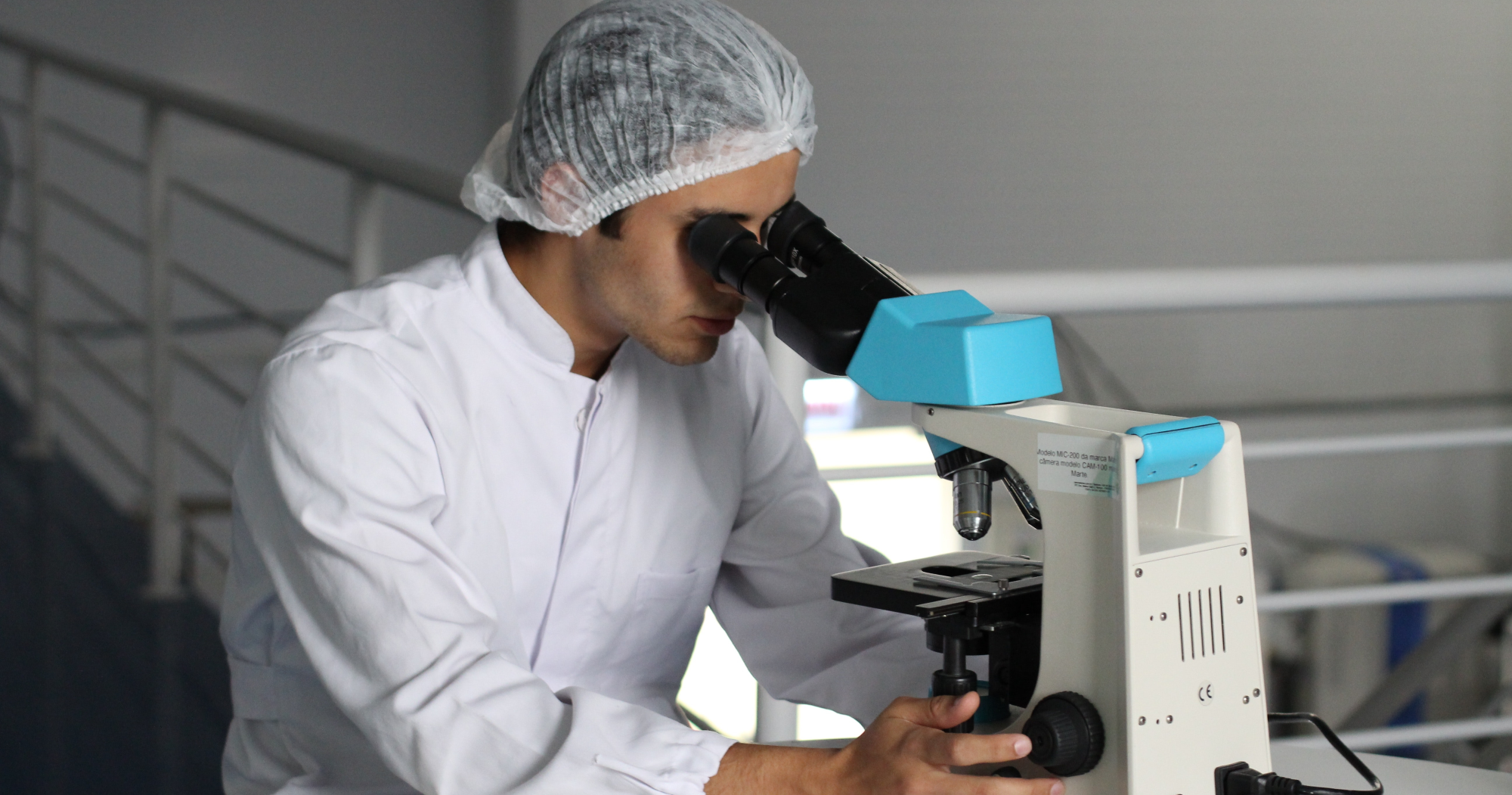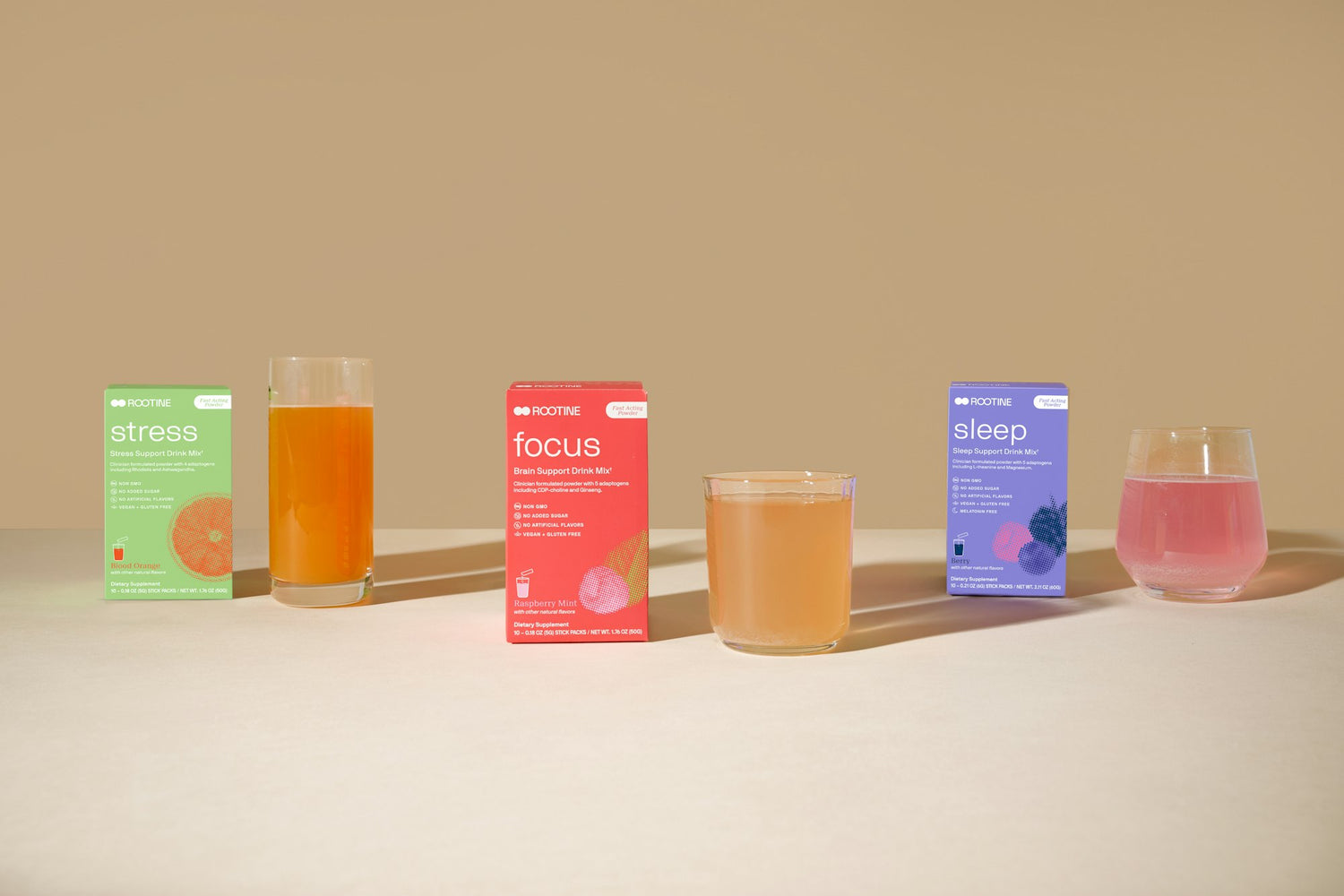Your genetic profile (i.e. your DNA) influences the metabolism of vitamins and minerals found in food. The goal of nutrigenetics is to determine how your genetic makeup influences your unique nutrient requirements.
Nutrigenetics is the foundation of truly personalized health products. Compared to the population average, you may require more of a nutrient, less of a nutrient, a certain form of a nutrient, or to avoid a nutrient entirely.
In short, it is the explanation for why “one-size-fits-all” health products do not work.
The Best Data? DNA vs. Blood vs. Lifestyle
We compile your DNA data, blood nutrient levels, and lifestyle factors to create a complete picture of your nutrient needs.
Most other “custom vitamin” companies base their recommendations solely on lifestyle quizzes to provide data about height, weight, diet, and other factors. However, while lifestyle quizzes show the nutrients you may need based on your habits, they entirely lack information about what is occurring in your body at a molecular level, and can be misleading without context provided by DNA and Blood data.
For example, a lifestyle quiz may show adequate folate intake due to a diet rich in fruits and vegetables but the person may have a common MTHFR mutation that makes it difficult to convert this folate into its bioactive form, and may need additional folic acid (or bioactive folate) compared to the norm. See below for more info.
DNA data is like the user manual of a car. It tells you what parts to use and how to do maintenance. Blood data is like the dashboard lights of a car, it tells you what is going on at that exact moment. Finally, lifestyle data is a general description of how, when, and where you drive your car. Each point of data is valuable, especially when used to provide context to the others.
Let’s see some examples:
We test for 52 genetic variants that have a proven impact on nutrient needs. Here are a few examples of mutations that we test for and how they impact nutrient needs.
MTHFR and Folate (Folic Acid)
Folate (also commonly called folic acid) is vitamin B9. Lot’s of names, but that’s a story for another time. Just know that folic acid is a synthetic vitamin added to fortified foods and supplements, and folate is a class of compounds that are naturally found in food.
Folic acid is required to build DNA in rapidly growing cells, which is why it is very important for pregnant women. Folic acid can also help to lower homocysteine, a compound found in blood that increases heart disease risk. Before folic acid can provide these mentioned benefits, it must be converted into their active form, called “bioactive folate” or 5-MTHF. The enzyme responsible for this conversion is called the MTHFR enzyme.
There are two common mutations in the MTHFR gene, which codes for the MTHFR enzyme. These mutations reduce the efficiency of the enzyme to convert folic acid into bioactive folate. Approximately 85% of the population has at least one of these two mutations.
The C677T mutation reduces the conversion efficiency by ~35% per copy. The A1298C mutation reduces the conversion efficiency by ~20% per copy. You can have zero, one, or two copies of these gene mutations.
For people with marginally slower MTHFR enzymes, a simple increase in folic acid will compensate for the slower conversion. For people with severely impacted MTHFR activity, supplementing directly with 5-MTHF to bypass the dysfunctional enzyme entirely may be necessary.
VDR and Vitamin D
Vitamin D is a hormone-like vitamin produced when direct sunlight hits the skin, and can also be absorbed from certain foods (e.g. fatty fish). Vitamin D has many functions, including promoting calcium absorption and bone health, along with proper immune function.
Vitamin D is recognized with the Vitamin D Receptor, or “VDR” for short. Vitamin D must activate the VDR to initiate the healthy processes associated with a proper level of vitamin D. However, a genetic mutation (called Bsml) in the VDR gene disrupts this activation.
Approximately 11% of the population (higher in populations with European and South Asian heritage) has the Bsml mutation and require higher vitamin D levels to achieve normal activation of the VDR receptor.
LCT and Calcium (Ca)
Calcium is the primary mineral in bones and has other functions, such as binding heavy metals in detoxification and initiating muscle contractions. Calcium in modern diets often comes from dairy products, although other calcium sources include certain mineral waters and non-dairy foods, like broccoli and sardines.
The LCT gene codes for an enzyme called lactase, which digests a natural sugar in dairy products called lactose. Approximately 9% of the population (higher in populations with European heritage) has a mutation in the LCT gene that makes them unable to digest lactose in adulthood, resulting in lactose intolerance.
Studies show that people with the LCT mutation tend to avoid dairy and therefore consume about or 200 mg? less calcium per day, compared to the average. These people likely need to supplement with calcium or make dietary changes to achieve adequate calcium intake.
HFE and Iron
Iron is an essential mineral and is used to transport oxygen through the body on red blood cells. But too much iron can be very harmful. Interestingly, the body does not have an efficient method of removing excess iron and relies on highly sensitive monitoring of iron uptake in the intestines.
Hemochromatosis is a rare, but often preventable condition, where excess iron slowly builds up in the body and can lead to cancer and cirrhosis of the liver. This is often due to genetic variations that interfere with the delicate system of iron absorption in the gut, allowing far too much iron into the body. Symptoms include bronze diabetes, darkening skin, abnormal heart rhythm, and joint pain.
Knowing if you are a carrier of the C282Y, H63D, or S65C mutations in the HFE gene is the first step in knowing if your multivitamin (and potentially diet) should include iron or not.
NQO1 and CoenzymeQ10
Coenzyme Q10, also known as CoQ10, is a mitochondrial antioxidant that is part of the “cellular respiration” process. This is the process in which cells make energy, and the cells that have the highest energy demand often have the highest concentrations of CoQ10. For this reason, many people supplement with CoQ10 to improve their heart health.
CoQ10 exists in multiple states, the most well-known being ubiquinone and ubiquinol. The NQO1 gene codes for the NQO1 enzyme that is responsible for converting ubiquinone into ubiquinol, the active form.
However, approximately 4% of the population (far more in populations with South Asian, East Asian, and American heritage) has a mutation in both NQO1 genes that deactivates the NQO1 enzyme completely, preventing CoQ10 from being activated. An additional ~30% of the population has a mutation in one NQO1 gene, resulting in significantly slowed conversion of ubiquinone to ubiquinol.
For NQO1 mutation carriers, supplementing with CoQ10 is a poor choice, and they may need additional non-CoQ10 antioxidants to make up for their lack of antioxidant capacity from the mutation.
GPX1 and Selenium
Your body produces its own master antioxidant called the “Glutathione peroxidase 1 enzyme,” or GPX1 for short. As you’ve recognized by now, the GPX1 gene codes for the GPX1 enzyme, which is a selenium-dependent enzyme. This means that to function properly, the GPX1 enzyme needs selenium.
Approximately 38% of the population (higher in populations of European and African heritage) has a mutation in the GPX1 gene that reduces the enzymes antioxidant capacity. Carriers of this mutation are at increased risk of oxidative stress and need additional selenium to achieve the same level of GPX1 enzyme efficiency.
APOA1 and Omega-3
Omega-3s considered “good fats,” and often considered the “best fats.” Found commonly in cold water fish, omega-3s are a major reason why fish is generally considered to be a healthy choice. Omega-3 supplements are widely used as they have been shown to improve HDL cholesterol and reduce blood triglycerides.
However, a variant in the APOA1 gene can change this narrative. APOA1 is an apolipoprotein component of HDL particles. One version of the APOA1 gene makes additional omega-3 intake lower HDL levels, an unexpected negative consequence. This version of APOA1 is found in approximately 66% of the population.
Carriers of the APOA1 variant should not increase omega-3 intake and find alternative methods to improve blood lipid levels, such as phytosterol supplementation.



